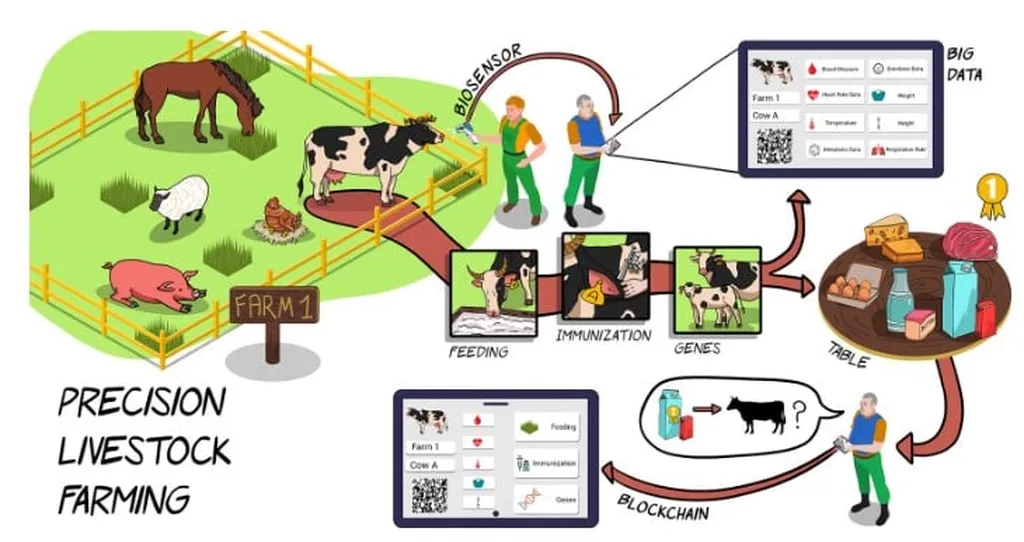In the high-stakes world of commercial farming, where every second counts and every animal matters, a groundbreaking review published in *Agriculture* is set to revolutionize how farmers manage one of their most critical yet often overlooked challenges: the detection and removal of deceased animals. Led by Yutong Han from the Department of Engineering at China Agricultural University, this comprehensive study synthesizes 128 published works, with a sharp focus on 52 key studies, to shed light on the latest technologies and methodologies in death detection and removal systems for high-density animal farming.
The review highlights a three-stage process for death detection: data acquisition, dataset establishment, and data processing. This structured approach allows for the development of sophisticated inspection systems, both fixed and mobile, which can autonomously capture images and identify deceased animals with remarkable accuracy. “The integration of machine vision and deep learning into these systems is a game-changer,” says Han. “It not only reduces the need for manual labor but also ensures a higher level of biosecurity and animal welfare.”
However, the journey doesn’t stop at detection. The study also delves into the intricate world of dead body removal systems, particularly for poultry and aquaculture. While current research has made significant strides in hardware design, real-farm validation remains a hurdle. This is where the future of the industry lies—enhancing the robustness and adaptability of detection models, brainstorming more feasible designs for removal systems, and seamlessly integrating inspection and removal systems to achieve fully automated operations.
The commercial impacts of these advancements are profound. For farmers, this means reduced labor dependence, increased productivity, and improved biosecurity. For the agriculture sector as a whole, it paves the way for more sustainable and efficient large-scale animal farming. “The successful application of these technologies will not only support satisfying production levels but also ensure the well-being of animals,” Han emphasizes.
As we look to the future, the integration of these technologies into everyday farming practices holds immense promise. It’s a future where precision livestock farming, agricultural robotics, and advanced machine vision work in harmony to create a more efficient, sustainable, and humane agricultural landscape. With the insights from this review, farmers and technologists alike are better equipped to navigate the challenges and seize the opportunities that lie ahead.

